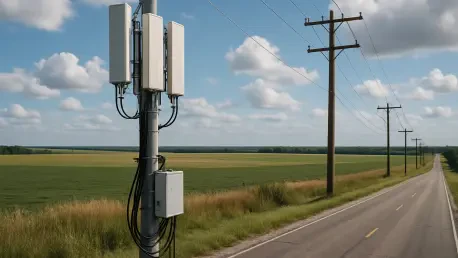In an intriguing move, the Federal Communications Commission (FCC) recently proposed changes to its broadband expansion progress report, which may present a more optimistic view of high-speed internet availability in the United States. This forthcoming report, scheduled for discussion at the next FCC meeting, will revisit benchmarks established under the Biden administration, which called for download speeds of 100 Mbps and upload speeds of 20 Mbps, with an eventual goal of reaching 1 Gbps/500 Mbps. The new proposal argues that maintaining these benchmark standards could unjustly favor certain communication technologies over others, thereby challenging the principle of technological neutrality. Concerns have been raised that technologies such as satellite and fixed wireless may not meet these high-speed criteria, potentially resulting in skewed metrics that reflect disproportionately positive broadband progress.
The FCC’s evolving stance aligns with its broader focus on broadband “availability” rather than accompanying factors such as affordability or equitable access. Last year, additional assessment criteria like deployment and affordability were incorporated to ensure comprehensive broadband access. However, the new proposal aims to remove these components, reflecting a shift in evaluative priorities. Furthermore, the revisions suggest that ongoing broadband projects should be counted in metrics as though they are already delivering services to households. By including unfinished projects as active service providers, future FCC reports could artificially display improved broadband service availability, potentially misleading stakeholders without effectively addressing service quality challenges in regions that lack proper connectivity.
Technological Neutrality and Reporting Standards
In the larger picture, the FCC’s argument for technological neutrality hinges on evaluating broadband services through a uniform lens, regardless of the technology employed. The aim is to ensure that all technologies, including those, like satellite and fixed wireless, that may not currently meet higher speed benchmarks, are given an equal opportunity for consideration in broadband reporting. This principle of neutrality involves assessing expansion progress without preferential treatment towards technologies typically equipped to reach high-speed criteria. However, critics argue that the pursuit of technological neutrality can inadvertently allow slower, less reliable connections from certain technologies, exaggerating the quality and availability of broadband services across the nation.
Debate surrounds the potential consequences of adjusting these reporting standards, as some stakeholders worry that disregarding deployment and affordability could mislead perceptions of actual broadband service improvements. By focusing solely on availability, reports may overstate progress, neglecting the barriers to fast, affordable internet access experienced by many American households. Critics suggest that without ensuring broadband services are not only available but also affordable and equitably deployed, claims of expansion can misrepresent reality. This could result in avoiding meaningful pressure on regulatory bodies and service providers to address systemic connectivity issues affecting consumers in underserved areas.
Broader Implications for Broadband Expansion
It is important to note that these proposed adjustments come amid broader complications affecting the pace of nationwide broadband expansion. The telecommunications industry faces considerable hurdles, including supply chain disruptions, workforce shortages, and high infrastructure costs. Moreover, uncertainties linger around Biden-era funding programs such as the Broadband Equity, Access, and Deployment initiative, which aimed to enhance access to high-speed internet across the country. These uncertainties have slowed many broadband expansion efforts and delayed progress toward universal access.
In this context, the FCC’s latest proposal raises questions about the sincerity of broadband expansion proclamations. While the adjusted metrics may seem to convey optimistic progress, they could obscure underlying issues of accessibility and affordability. Critics, including advocacy groups and state regulators, argue that the progress portrayed may undermine genuine discussions and policy actions needed to maximize broadband reach, particularly in rural and economically disadvantaged communities. By glossing over persistent challenges, there is a risk that initiatives for true broadband access and equity may falter, ultimately impacting those most in need of reliable connections.
Future Considerations for Broadband Equity
The Federal Communications Commission (FCC) has proposed changes to its broadband expansion progress report, potentially painting a rosier picture of high-speed internet availability in the U.S. The upcoming report, set for discussion at the FCC’s next meeting, will re-evaluate benchmarks introduced by the Biden administration, which called for 100 Mbps download and 20 Mbps upload speeds, with a goal of 1 Gbps/500 Mbps. The new proposal argues these standards could favor certain communication technologies, challenging the idea of technological neutrality. Concerns are raised that satellite and fixed wireless technologies might not meet these high-speed standards, leading to skewed metrics suggesting exaggerated broadband advancements.
The FCC’s changing perspective now emphasizes broadband “availability” over factors like cost or fair access. Previously, criteria such as deployment and affordability were included for comprehensive broadband evaluation, but the new proposal seeks to eliminate these elements, signaling a shift in priorities. Moreover, it suggests counting ongoing projects as if they are already providing services, which could falsely indicate improved availability in future reports, misleading stakeholders and failing to address service quality issues in poorly connected areas.









